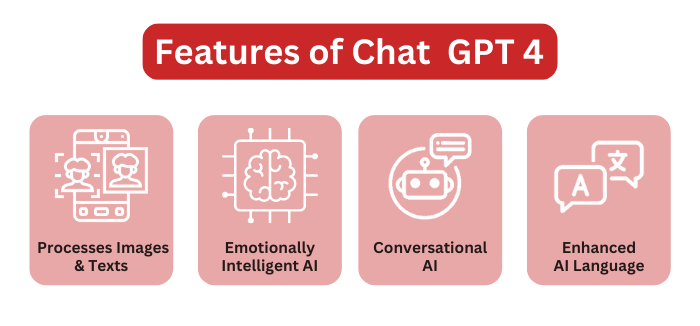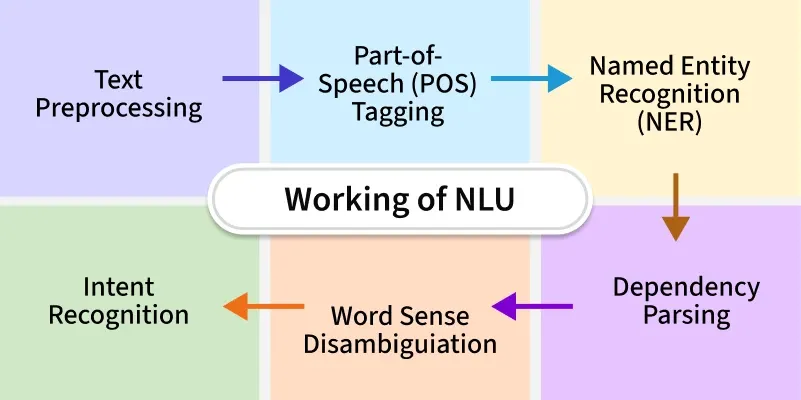
- Introduction
- What is ChatGPT-4?
- Evolution from GPT-3
- Key Features
- Use Cases
- Performance Improvements
- Natural Language Understanding
- Limitations
- Ethical Considerations
- Conclusion
Introduction
The rapid development of artificial intelligence (AI) has reshaped how we interact with technology. One of the most prominent breakthroughs in recent years is OpenAI’s ChatGPT, which uses deep learning to understand and generate human-like text. The latest iteration, ChatGPT-4, brings advanced capabilities, pushing the boundaries of natural language processing (NLP) even further. Artificial Intelligence Training This document explores ChatGPT-4, including its origins, evolution, features, use cases, limitations, and ethical concerns, as well as its transformative applications across various industries.
What is ChatGPT-4?
ChatGPT-4 is a state-of-the-art large language model developed by OpenAI. It is part of the Generative Pre-trained Transformer (GPT) family, specifically designed to understand and generate human-like responses in natural language. Trained on a vast corpus of text data, ChatGPT-4 is capable of generating coherent, contextually relevant, and grammatically What is Artificial Intelligence correct text across a wide array of topics and domains. Unlike its predecessors, it demonstrates better comprehension, longer contextual memory, and multi-modal capabilities allowing it to interpret both text and images.
Ready to Get Certified in Artificial Intelligence ? Explore the Program Now Artificial Intelligence Online Training Offered By ACTE Right Now!
Evolution from GPT-3
ChatGPT-4 represents a significant leap from GPT-3 in several areas. GPT-3, released in 2020, was notable for its impressive 175 billion parameters and ability to perform tasks such as translation, summarization, and content creation with minimal prompting. However, GPT-4 advances these capabilities with a more refined architecture and improved performance in reasoning, problem-solving, and contextual understanding.
Key improvements over GPT-3 include:
- Enhanced Contextual Understanding: GPT-4 can manage more extended conversations and maintain coherence over thousands of words.
- Better Fine-Tuning:It is fine-tuned using reinforcement learning from human feedback (RLHF), enhancing safety and user alignment Artificial Intelligence for Beginners .
- Multi-modal Abilities: GPT-4 can process images alongside text, making it suitable for broader applications like visual question answering and image captioning.
- Greater Accuracy: It shows improved factual accuracy and consistency compared to GPT-3.
- Extended Context Window: GPT-4 can handle significantly more input text than GPT-3, allowing for deep and nuanced conversations or document analysis.
- Multi-Modal Input: It can analyze and respond to image-based prompts in addition to text.
- Few-Shot and Zero-Shot Learning: With minimal examples, GPT-4 can perform complex tasks such as code generation or creative writing A* Algorithm in AI .
- Language Support: It offers improved support for non-English languages, making it globally accessible.
- Tool Integration: GPT-4 can integrate with tools like web browsers, code interpreters, and third-party plugins to execute tasks more effectively.
- Customer Support: Automating responses and offering intelligent assistance.
- Education: Assisting students and teachers with personalized tutoring, homework help, and curriculum development.
- Healthcare: Supporting diagnosis and documentation (non-critical decisions), though always under expert supervision Artificial Intelligence Training.
- Content Creation: Drafting blogs, scripts, social media posts, and more.
- Programming: Assisting in code writing, debugging, and learning programming languages.
- Translation and Localization: Providing high-quality translations and cultural context.
- Business Intelligence: Analyzing reports, summarizing documents, and generating insights.
- Legal Analysis: Helping with legal research and document generation.
- Factual Accuracy: Reduced hallucinations and better adherence to verified knowledge sources.
- Logical Reasoning: Enhanced capabilities in step-by-step problem-solving and mathematical reasoning.
- Memory Retention: Though limited to session memory, GPT-4 can remember and apply previous inputs more effectively How to Build a Career in AI and Machine Learning.
- Creative Tasks: More adept at generating poetry, fiction, and creative content.
- Hallucination: It may generate plausible but false or misleading information.
- Bias: Inherits biases present in its training data, which can affect outputs.
- Context Limitations: Though improved, Advantages and Disadvantages of Artificial Intelligence it still has a maximum token limit beyond which it cannot maintain context.
- Dependence on Prompts: Performance can vary significantly based on how prompts are structured.
- Limited Real-Time Awareness: Without specific plugins or tools, GPT-4 cannot access live data.
- Interpretation of Visual Data: Its multi-modal image capabilities are still limited and not universally available.
To ExploreArtificial Intelligence in Depth, Check Out Our Comprehensive Artificial Intelligence Online Training To Gain Insights From Our Experts!
Key Features

Use Cases
Looking to Master Machine Learning? Discover the Artificial Intelligence Expert Masters Program Training Course Available at ACTE Now!
Performance Improvements
ChatGPT-4 exhibits marked improvements in several performance metrics:
Benchmarks and real-world tests show that GPT-4 outperforms GPT-3.5 and other language models in standardized testing scenarios such as the Uniform Bar Exam, SATs, and LSATs.
Natural Language Understanding
Natural Language Understanding (NLU) is a subfield of artificial intelligence that focuses on enabling machines to comprehend, interpret, and derive meaning from human language. Unlike basic text processing, NLU involves understanding context, intent, semantics, and sentiment within textual data.

It powers applications such as chatbots, virtual assistants, sentiment analysis, and language translation by converting unstructured text into structured data that machines can act upon. NLU leverages techniques from linguistics, machine learning, Role of Artificial Intelligence and deep learning to recognize entities, detect relationships, and respond intelligently. Its advancements are critical for creating AI systems that can interact naturally and meaningfully with humans.
Limitations
Despite its advancements, ChatGPT-4 is not without flaws:
Ethical Considerations
Ethical considerations in artificial intelligence and machine learning are crucial to ensure that technology is developed and used responsibly. These include addressing biases in datasets and models, ensuring transparency in decision-making, protecting user privacy, and preventing misuse of AI systems. Developers must consider the social, legal, and moral implications of AI applications, particularly in sensitive areas such as healthcare, finance, and criminal justice. Implementing ethical guidelines helps build trust, promotes fairness, and minimizes potential harm. By prioritizing ethics, organizations can harness AI’s benefits while maintaining accountability and safeguarding societal well-being. OpenAI continues to work on responsible AI use, developing safety mitigations, usage guidelines, and monitoring systems.
Preparing for Artificial Intelligence Job Interviews? Have a Look at Our Blog on Artificial Intelligence Interview Questions and Answers To Ace Your Interview!
Conclusion
ChatGPT-4 represents a substantial advancement in AI-powered language models. With improved understanding, multi-modal capabilities,machine learning and expanded use cases, it serves as a powerful tool across disciplines. However, its deployment must be guided by ethical considerations and responsible usage. As the AI landscape continues to evolve, Artificial Intelligence Training ChatGPT-4 stands as a testament to how far we’ve come and a glimpse into the immense potential that lies ahead for human-AI collaboration.




